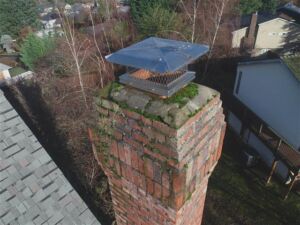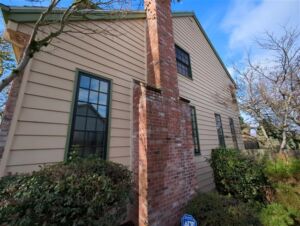
The Chimney Safety Institute of America recommends that a Level 2 chimney inspection be performed whenever a home is sold. A Level 2 inspection can help negotiate repairs or ensure that the new homeowners are aware of any potential issues. It is also a good idea to get a Level 2 chimney inspection when there is a change in the type of fuel used, the installation of a new heating appliance, or after a chimney fire. Some insurance companies may require a Level 2 chimney inspection report before providing coverage, especially if the home has a history of chimney-related issues. This is because a Level 2 inspection is a more comprehensive evaluation that goes beyond a basic visual examination. In this article, we’ll explore what a Level 2 chimney inspection is and why it is crucial for homeowners and home buyers.
A Level 2 chimney inspection involves a thorough evaluation of all accessible components of the chimney and heating appliance. This includes the interior and exterior portions of the chimney, as well as connections to heating appliances such as wood stoves and furnaces. Similar to a Level 1 inspection, a Level 2 inspection includes a visual examination of the accessible portions of the chimney. This typically involves inspecting the interior of the chimney using specialized tools and equipment. These tools can include chimney cameras which can help identify any damage, blockages, or deterioration inside the flue that are not visible without this equipment. Using imaging devices lets the inspector get a detailed view of the condition of the flue liners and helps identify any structural defects or obstructions.
Level 2 inspections also examine areas of the chimney that are reasonably accessible, such as crawl spaces, attics, and basements. This allows inspectors to identify potential issues that may not be visible for a homeowner or during a standard Level 1 inspection.

A Level 2 inspection also assesses the structural integrity of the chimney and its components. This is particularly important for older homes or homes that have chimneys with significant weathering. Detecting structural issues early can prevent more extensive and costly repairs in the future. It can also help prevent catastrophic accidents like chimney collapse.
In conclusion, a Level 2 chimney inspection is an important part of responsible homeownership and home buying. Beyond the basic visual examination provided by a Level 1 inspection, a Level 2 inspection offers a more thorough assessment of the chimney system’s condition, identifying hidden issues, ensuring structural integrity, and promoting compliance with safety standards.
You can find more information about Level 2 chimney inspections here:
